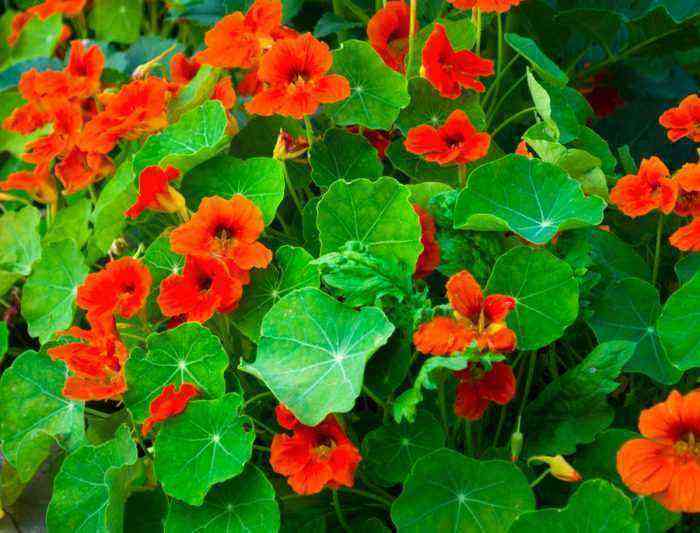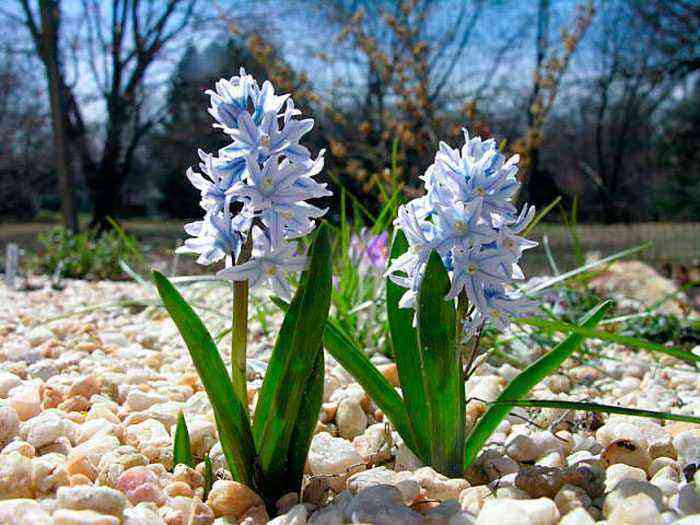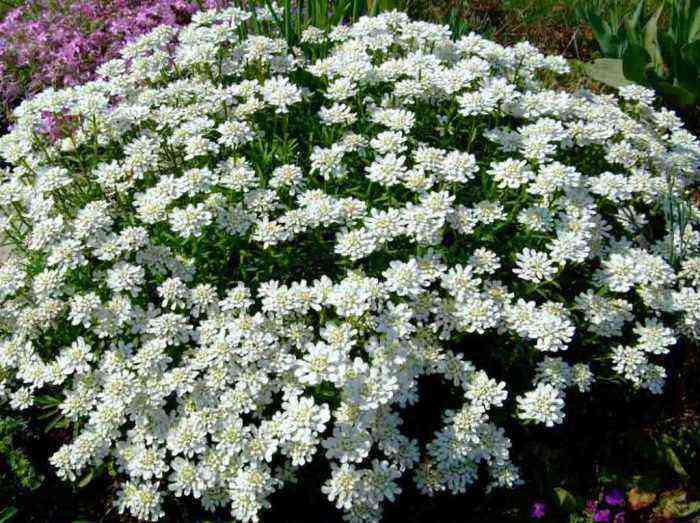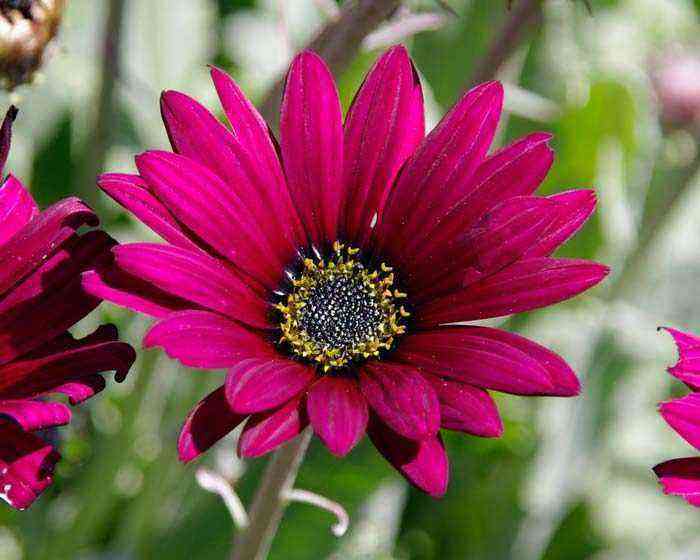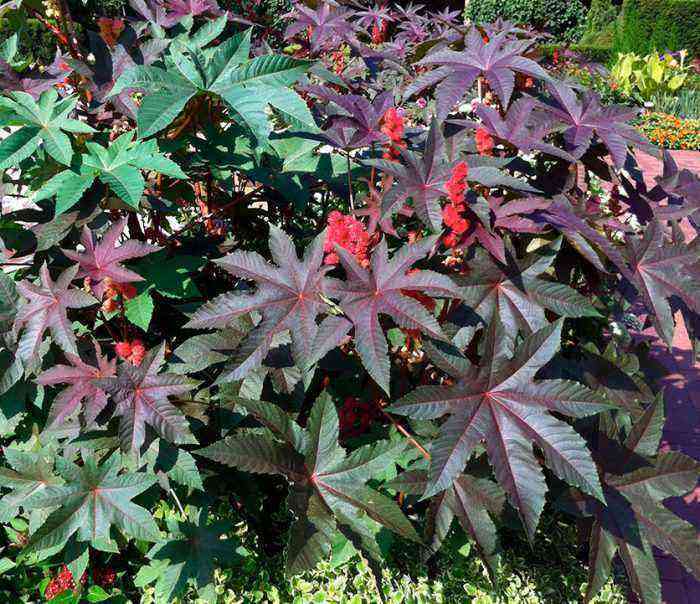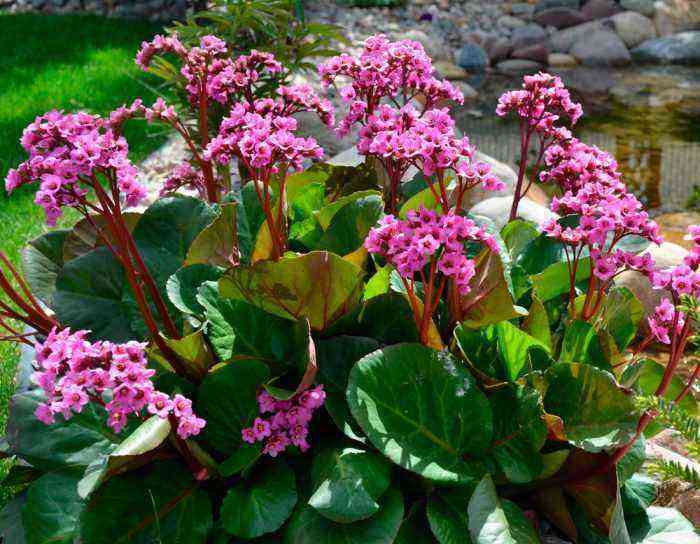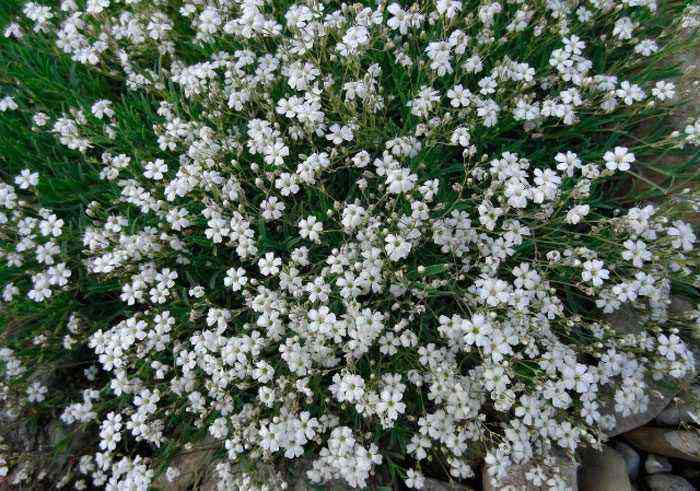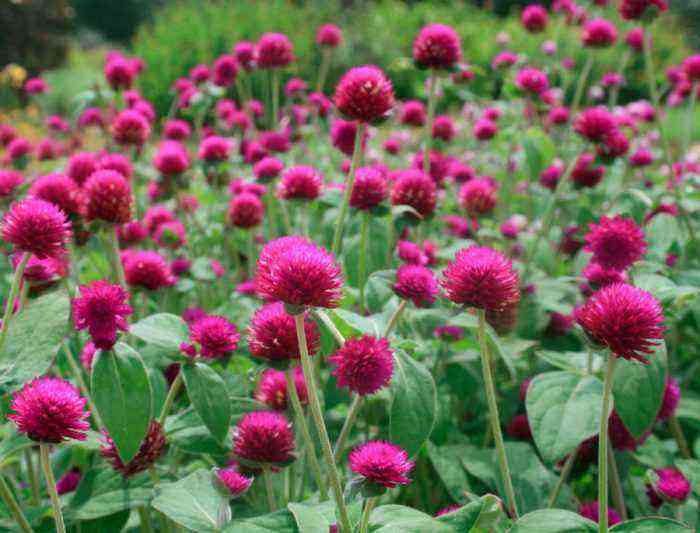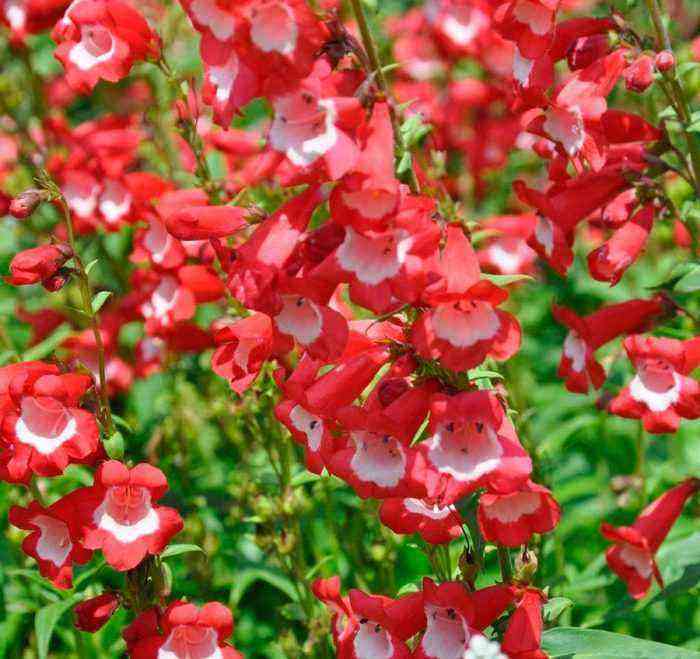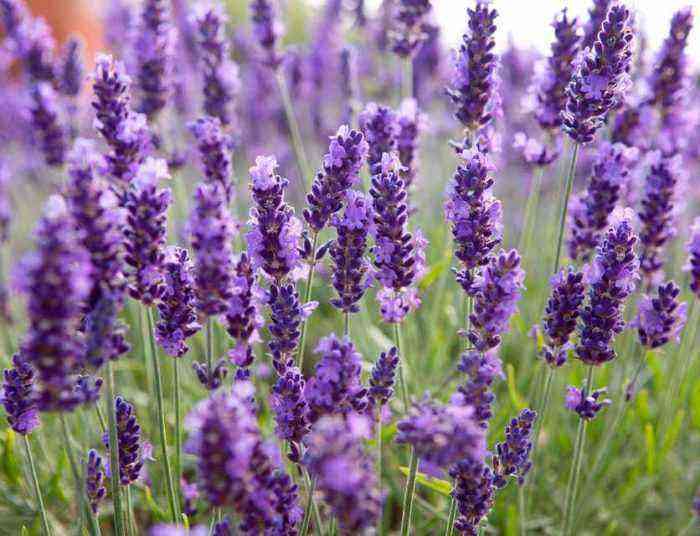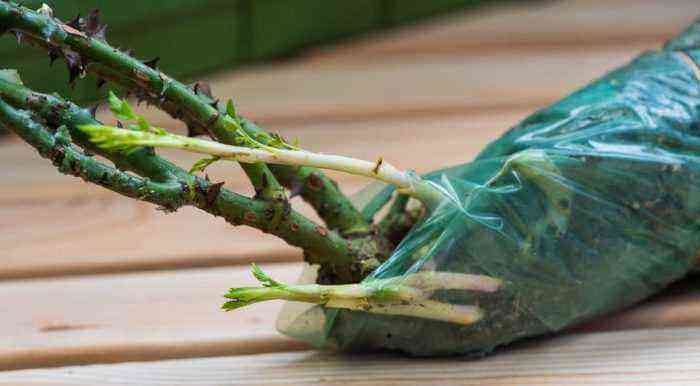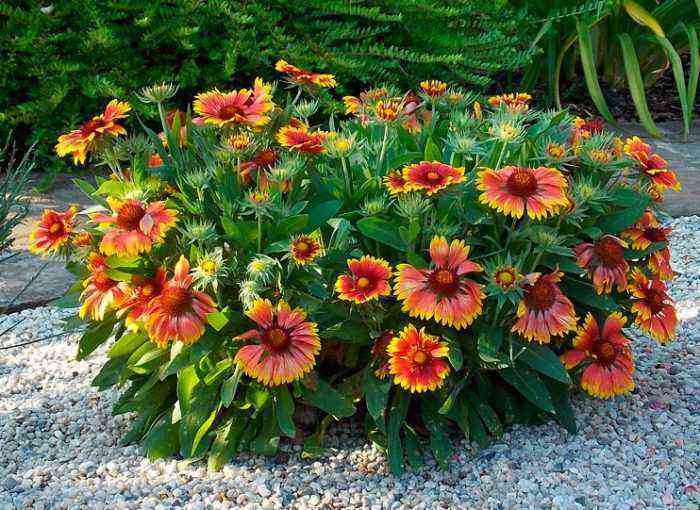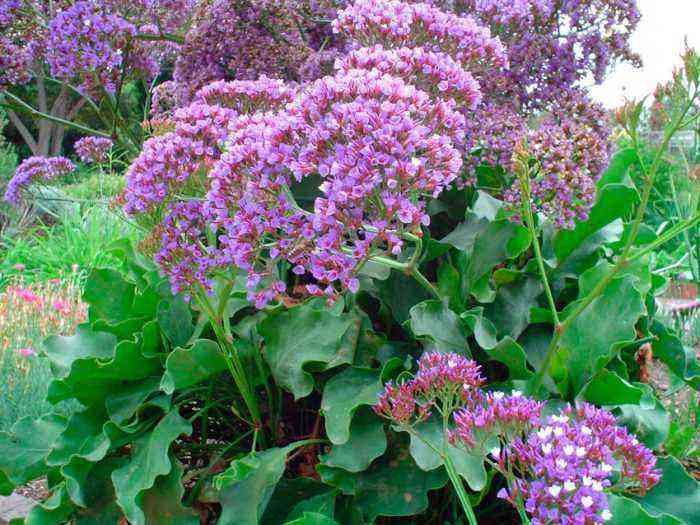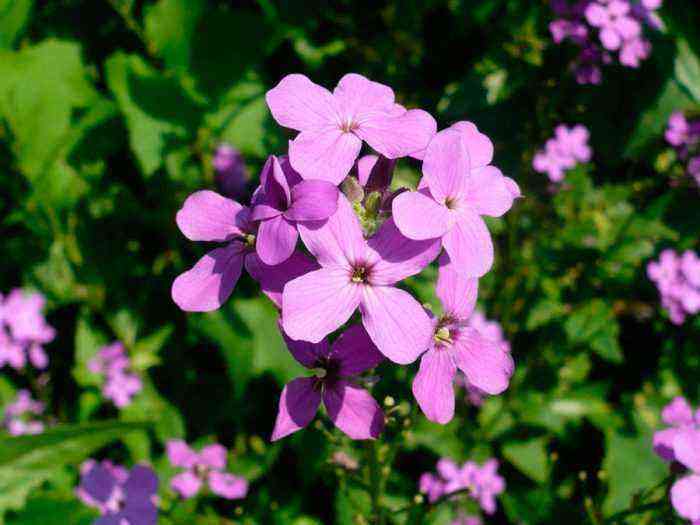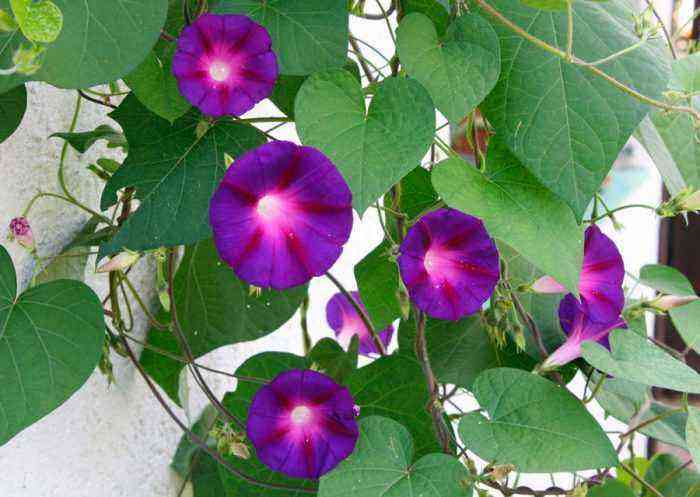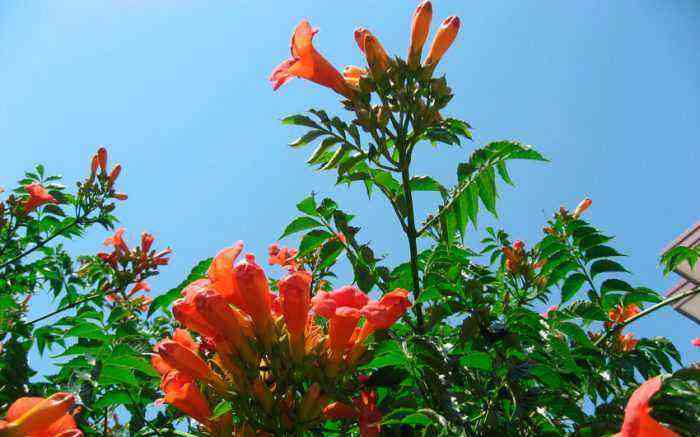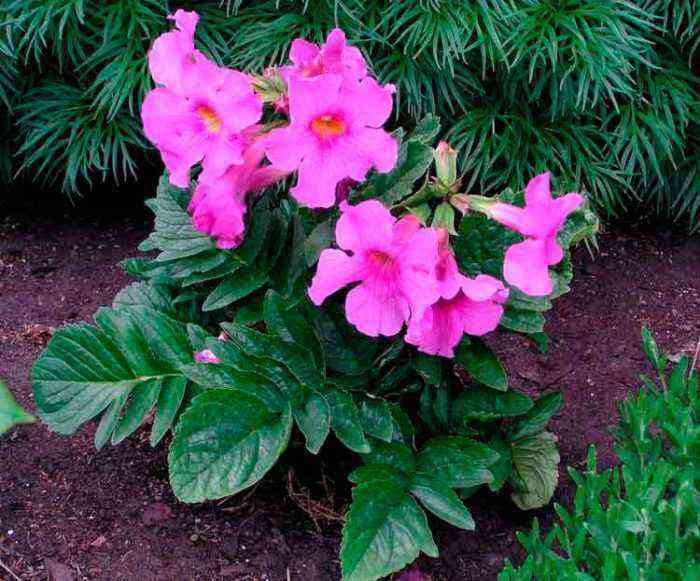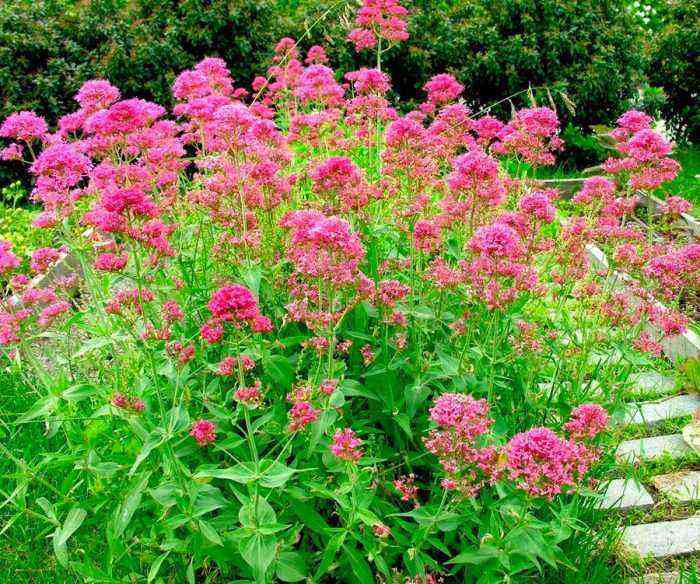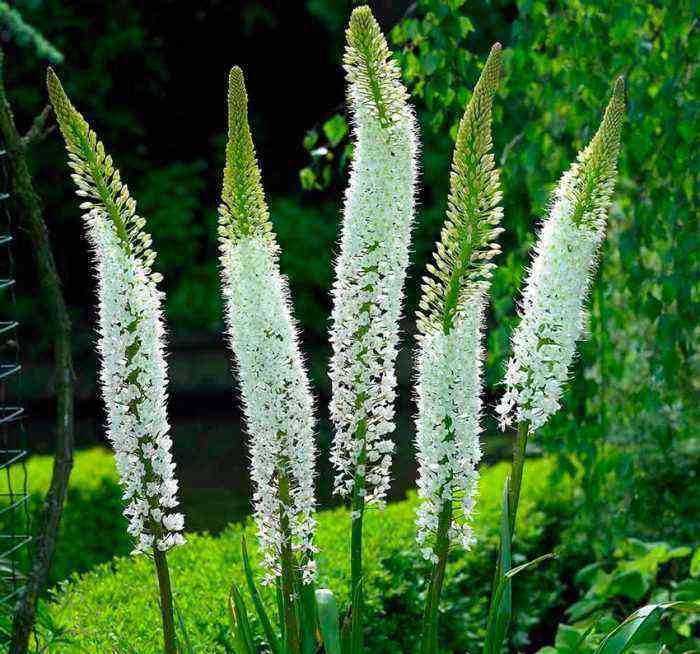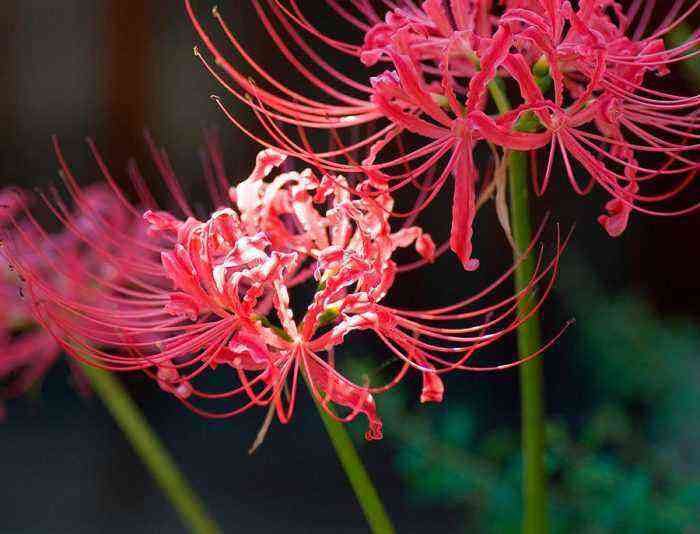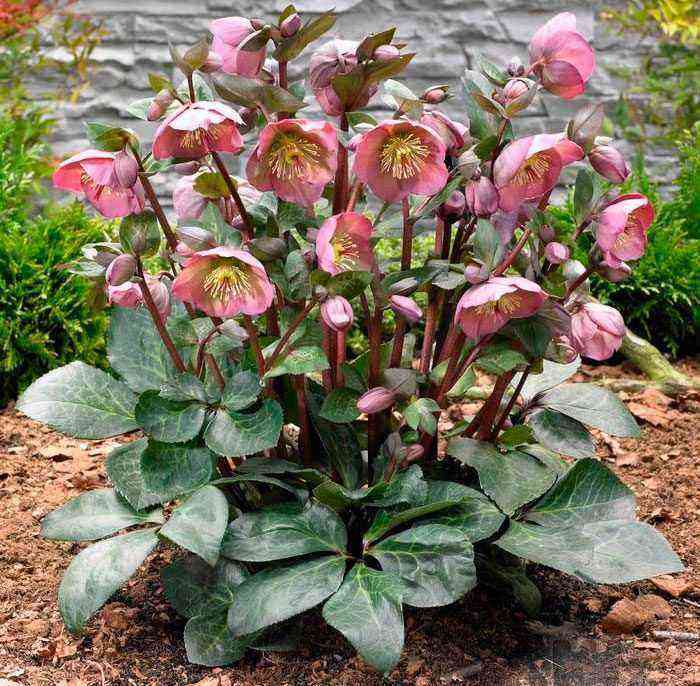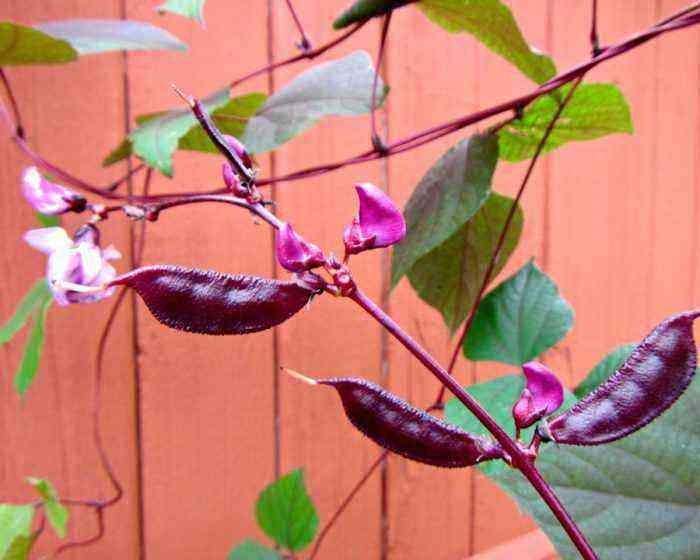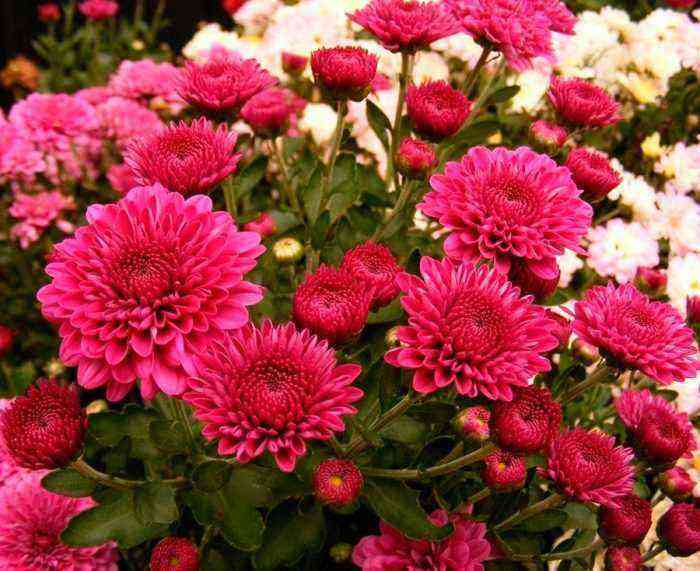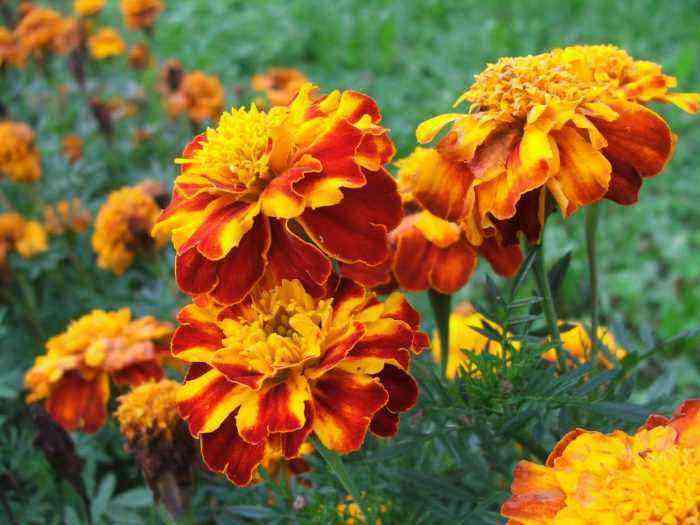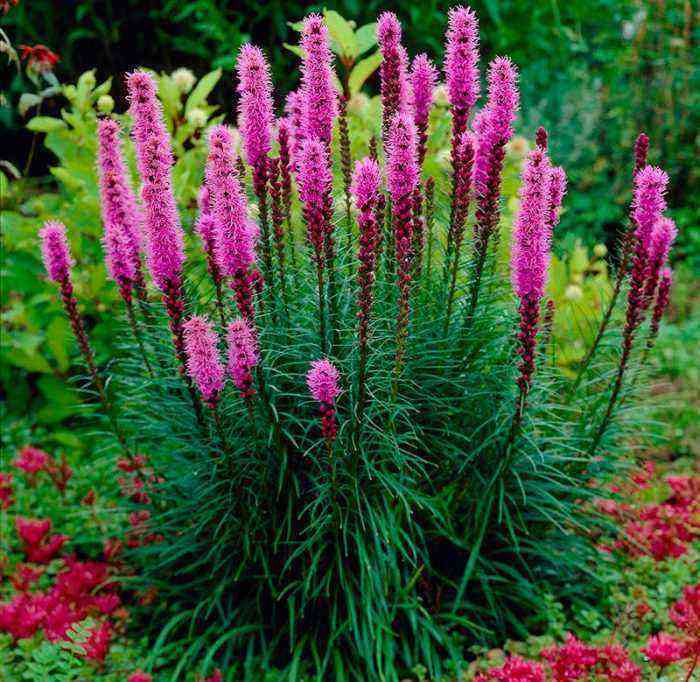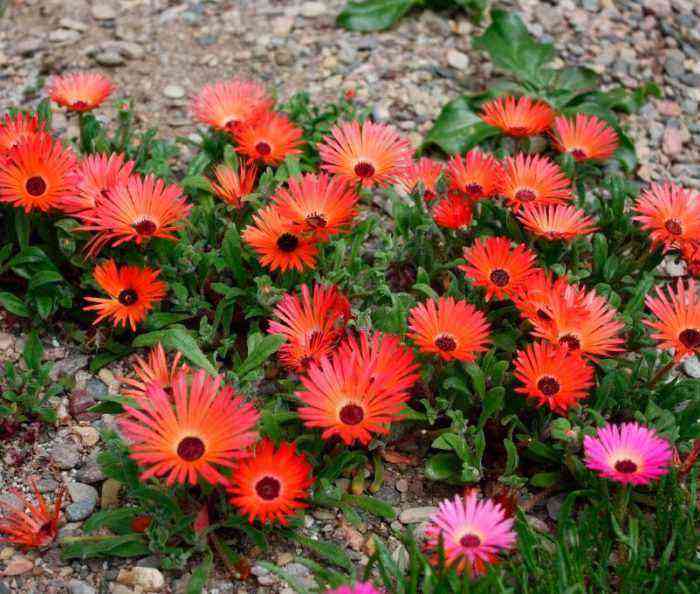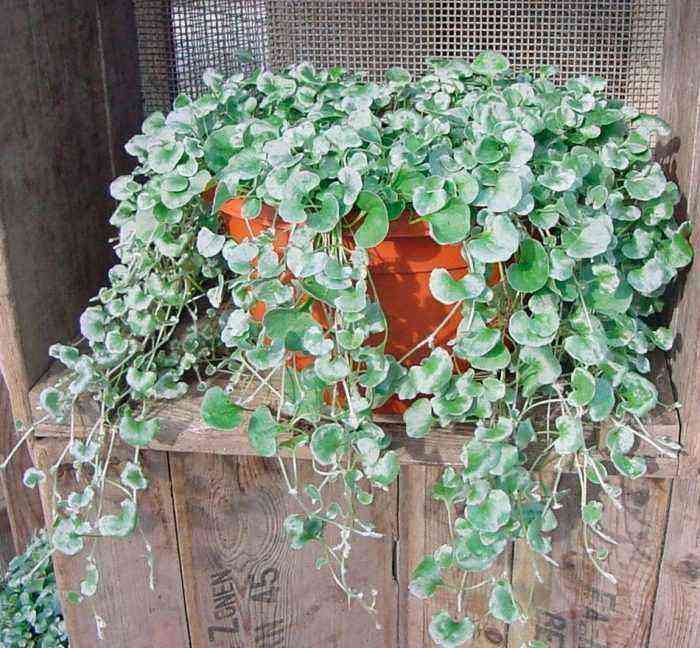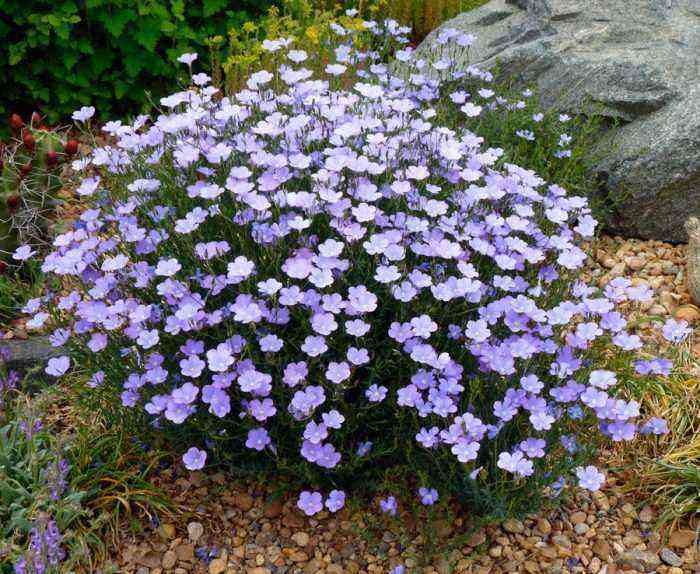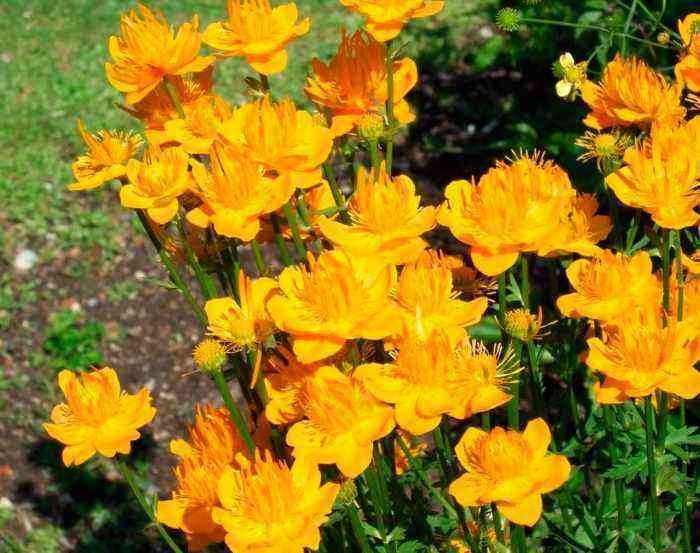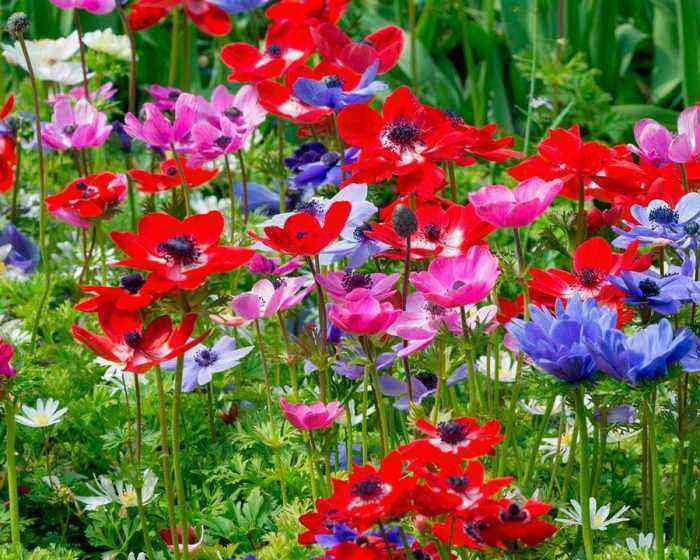Low-growing perennial plants Chionodoxa are representatives of the Scylla genus of the Liliaceae family. To date, 6 species of such a plant are known. In nature, they can be found on the island of Crete and in Asia Minor. The name of this plant consists of 2 Greek words, which translate as “snow” and “glory, pride”. People call him “snowman” or “snowy beauty”. A delicate bush of chionodoxa with lovely flowers grows simultaneously with snowdrops and groves at a time when the snow cover has not yet completely disappeared from the ground.
Features of Chionodox
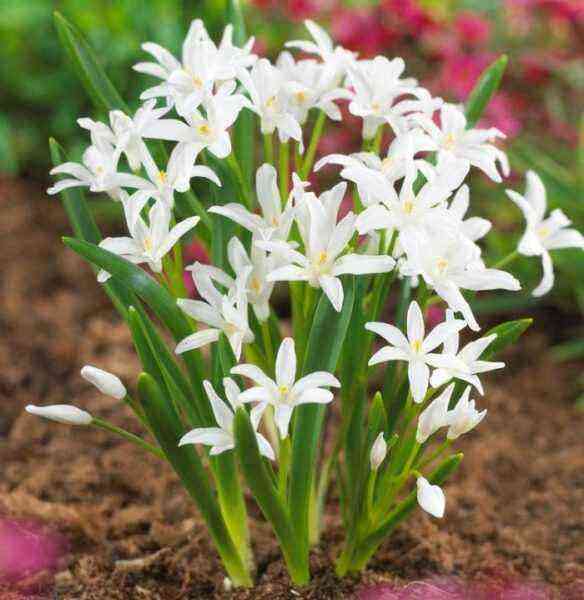

Chionodox are bulbous plants. At the same time, a pair of basal leaf plates of a dark green color grows with the peduncles, they are grooved and broadly lanceolate, and reach from 8 to 12 centimeters in length. Loose brushes, located on peduncles, consist of six-petalled bell-shaped flowers that are blue, pink, white or blue in color. The fruit is a juicy box, and inside it are black seeds. Ovate bulbs are about 30 mm long and about 17 mm across. Their surface is covered with light-colored scales. These bulbs are designed for 2 annual cycles.
Planting chionodox in the open field


What time to plant
It is recommended to plant chionodox bulbs in open ground in the first autumn weeks after the formation of root ridges on their bottoms ends. For planting, you can choose both a well-lit area and one that is in slight shade. If you plant the bulbs in those places where the snow begins to melt first, then such chionodoxes will be distinguished by early flowering. If the flowers grow in a shaded area, then they will bloom later, growing in a well-lit place, but their flowering will be longer.
For planting such flowers, areas located under shrubs and trees are suitable. The fact is that during the flowering of this plant, there is no foliage on the shrubs and trees, which is able to absorb the sunlight necessary for chionodoxes for normal growth and flowering. It is recommended to grow these plants in the garden next to such flower crops as: primroses, hellebores, hyacinths, crocuses, pushkinia, white flowers, adonis and dwarf irises.
Rules of landing
A suitable soil should be loose, nutritious, moderately moist, and slightly alkaline or neutral. These flowers respond extremely positively to the presence of a small amount of forest land in the soil, which contains fragments of tree bark and rotted foliage.
This flower should be planted in open soil in the same way as other bulbous crops. The planting depth depends on the size of the planting material, as well as the distance between the bulbs. Large bulbs must be buried to a depth of about 60–80 mm, while keeping a distance of 8–10 centimeters in the row between them. Not very large bulbs are planted to a depth of 40–60 mm, and the distance between them should be equal to 60–80 mm.
Caring for chionodox in the garden
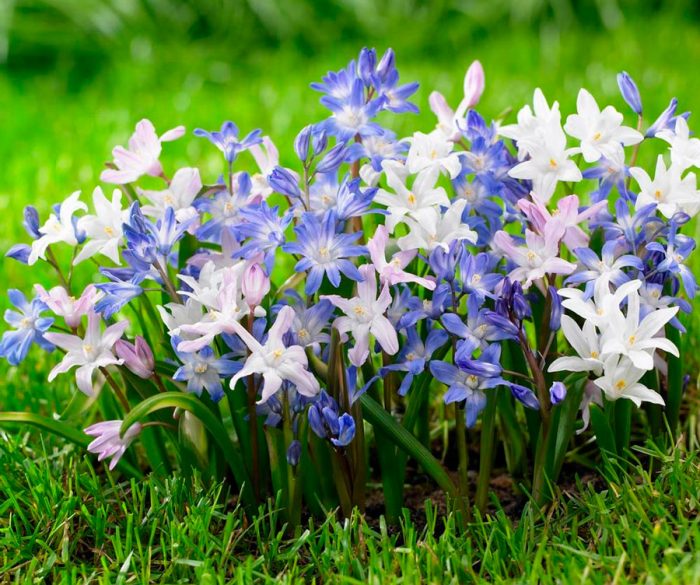

Chionodoxes of all primroses are the most unpretentious and undemanding to care for, so even novice gardeners can grow them. Watering these plants is necessary only when the winter time turned out to be little snow, and the spring time was dry. After the flowers are watered, it is necessary to loosen the surface of the soil around them, while pulling out all the weeds. Sprinkle the surface of the site with a layer of mulch (dry peat or humus) and then the amount of weeding, loosening and watering will be significantly reduced.
Also, these plants require systematic feeding and transplanting, and chionodoxes should also be sprayed with special agents for diseases and harmful insects, if necessary. To exclude the reproduction of this culture by self-seeding, you should regularly cut off all the testes before they have matured.
How to water and feed


If there is a prolonged dry weather, then chionodoxes need to provide systematic and sufficiently abundant watering. Water the plants early in the morning, while trying to keep water droplets away from the flowers. Water for irrigation is used settled and not cold.
Such a plant is fed with complex mineral fertilizers. For example, you can take Nitroammofoska, it is introduced into the soil in early spring, which contributes to long and abundant flowering. If the fertilizers are granular, then they must be evenly distributed over the surface of the site, and after that the soil is slightly loosened, as this will significantly accelerate the entry of nutrients into the plant root system.
How to transplant and propagate
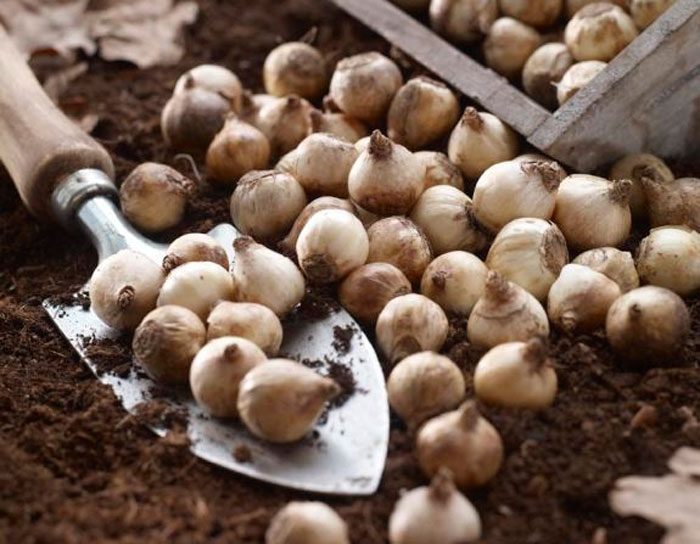

The easiest and fastest way to propagate such a plant is by children, which need to be separated from the parent plant. For 1 season, 2-4 children grow up in one bush.
Chionodoxes can grow in the same place without transplantation for about 10 years. However, experienced gardeners recommend removing nests from the soil 1 time in 5 or 6 years, dividing them and planting them. The bulbs should be dug out from mid to late July, at which time the aboveground part of the bush should turn yellow and dry out. The bulbs are planted in open soil in the last days of August or the first – in September; before planting, the dug nests are placed in storage in a dark, dry and cool (from 15 to 17 degrees) place. After the nest is removed from the soil, it is not recommended to separate the children from it, because the smallest of them will most likely die before disembarking. It is better to do the division of the nest before directly planting the bulbs in the soil.
If chionodoxes are already growing on your site, then there is no need to grow them from seeds, since these flowers reproduce very well by self-sowing. The seeds have a fleshy formation that ants simply adore. Therefore, they take seeds and carry them a fairly decent distance. Plants grown from seeds begin to bloom for the first time after 2 or 3 years.
Wintering
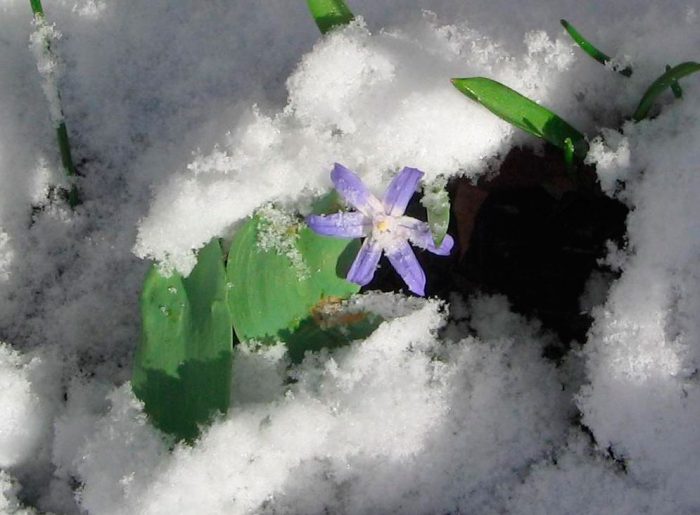

When the plants have faded, all arrows will need to be removed from them. The foliage is not touched, it is cut off only after wilting (in the second half of July). This flower is very resistant to frost. But if it grows in your open area, then in late autumn its surface should be covered with spruce branches or a thick layer of fallen leaves. In regions with a mild climate, the plant does not need shelter in any case.
Diseases and pests
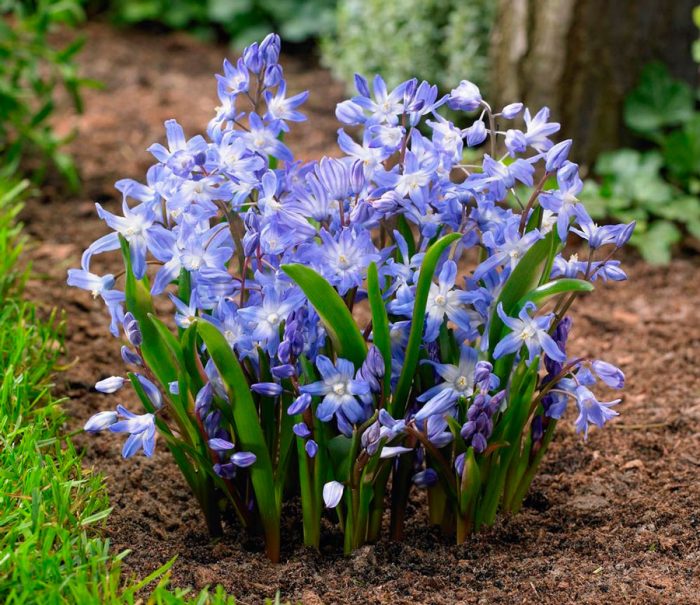

Chionodox is a bulbous crop and is therefore susceptible to diseases such as sclerotiniasis, septoria, gray rot, fusarium and achelenchoides. These diseases, as a rule, damage the bulb itself, which is hidden from the eyes of the gardener by the earth, and he learns that the plant is affected only when the bush turns yellow, withers and it is no longer possible to change something. In this regard, before planting, the etching of the bulbs is a mandatory measure; for this, a Fundazol solution is used. Also, for the purpose of prevention, liquid should not be allowed to stagnate in the soil, as this can lead to rot on the bulbs, so you need to water the flowers sparingly.
The most dangerous of all pests for this culture are the larvae of the root meadow mite, as well as rodents. They are also capable of injuring the bulb. To get rid of ticks, the bush should be sprayed with acaricide (Aktara, Akarin, Aktellik, Agravertin, etc.). And you can clear your area of moles and mice by spreading bait with poison in several places.
Types and varieties of chionodox with photos and names
In nature, there are 6 types of chionodox, but gardeners grow only 3 of them, as well as various hybrids and varieties obtained from these species by breeders.
Chionodoxa forbesii, or Chionodoxa tmolusi


In the wild, this species grows in the southern part of Turkey. The height of the bush is about 0,25 m. The peduncle bears a loose racemose inflorescence, which consists of 15 flowers of pink or white color. This plant does not form seeds, however, the bulbs are overgrown with children every season. Cultivated since 1976 Cultural varieties:
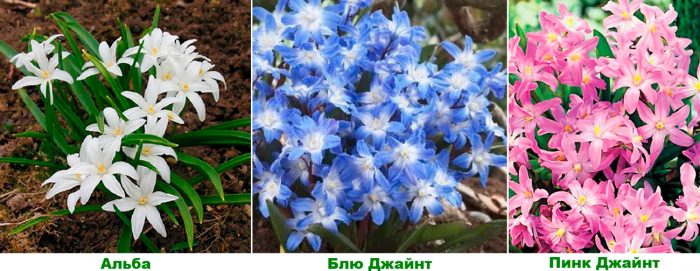

- Alba – the color of the flowers is snow-white;
- Blue Giant – the perianths of this plant have a deep blue color;
- Pink Giant – The flowers of this variety are painted in a pinkish-lavender color.
Chionodoxa luciliae, or Chionodoxa gigantea
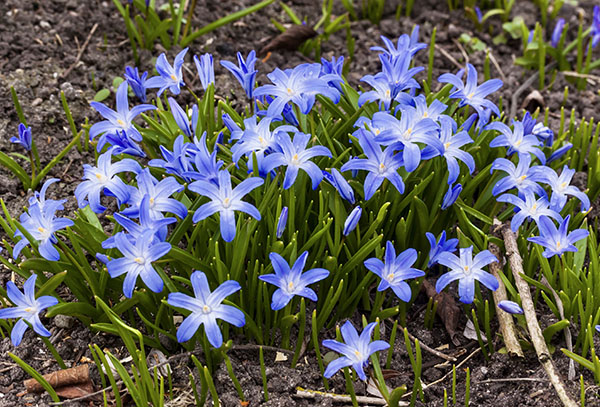

This species got its name in honor of Lucille Boissier. It occurs naturally in the mountains of Asia Minor. The height of the bush is about 0,2 m. The leaf plates of such a plant are grooved, linear in shape. The inflorescences include 10 flowers, reaching about 30 millimeters in diameter, they are painted bluish-blue, and their throats are white. It has been cultivated since 1764. The most popular varieties among gardeners are:
- White… The height of the bush does not exceed 10 centimeters. The flowers are white, and their diameter is 25 millimeters. In one racemose inflorescence, there are about 3 or 4 flowers.
- Pink… The flowers are pink with a slight purple tint. In culture, the variety of this variety is very popular – Chionodox Rose Queen (aka Rosie Queen or Pink Queen): this plant has flowers painted in a very spectacular shade of pink.
- Giant white… Flowers reach 40 millimeters across.
Chionodoxa sardinian (Chionodoxa sardensis)


The homeland of this species is Asia Minor. The bush has a pair of linear leaf plates. The height of powerful peduncles is about 12 centimeters, they bear loose racemose inflorescences, consisting of 10 flowers of a deep blue color, reaching 20 mm in diameter. It has been cultivated since 1885. There is a garden form, the color of the flowers in which can be pink or white.
Breeders also use such species as Chionodoxa dwarf, or Cretan, Chionodoxa whitish and Mrs. Lok to obtain new varieties. However, the species themselves are not yet grown by gardeners. Breeder V. Khondyrev, using various species of this plant, was able to create a whole series of hybrids: Watercolor, Artemis, Absolute, Atlantis, Andromeda, Aphrodite and Arctic. Also quite popular among gardeners are hybrids created by crossing the Scylla double-leaved and Chionodox Forbes, they are called chionoscilla: the height of the bushes is not more than 10 centimeters, small star-shaped blue flowers are collected in dense inflorescences.


